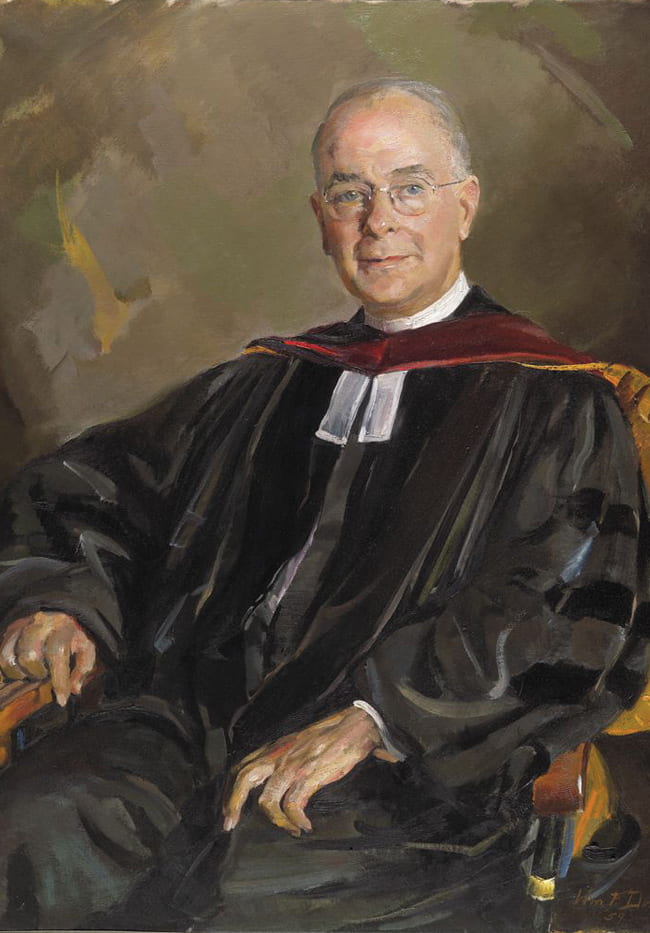
A Look Back
Church and University
Douglas Horton portrait, 1959. Harvard University portrait collection, Harvard Divinity School
By Douglas Horton
If the Church and University understood each other in all situations, the relationships would be simplified and the opportunities enhanced. Each tends to nurse a mental picture of the other which is close to caricature. To the Church the University—apart from its scientific side, for which there is a good deal of respect—is the absent-minded professor who is on a train and has forgotten where he is going. They used to tell of such a member of the University of Edinburgh who on discovering his predicament got off the train and telegraphed his wife, “Where am I going?” The wife thereupon telegraphed back, “Look at your ticket”; but in the case of the University the ticket has been lost and the professor simply goes on in the direction the train happens to be moving. . . . In the eyes of the Church, aimlessness, non-commitment to any special end, is the sign of an abstracted and ineffective mind.
To the University the Church, on the other hand, is a somewhat simple-minded lady who is committed to a set of notions, more or less outworn, and whose piety (to borrow a line from Chekhov) is a kind of trolley line on which she travels tiresomely back and forth. Her course has direction, God wot, but is wholly without creative deviation:
All our fathers have been Churchmen
Nineteen hundred years or so
And to every new suggestion
They have always answered, “No.”
. . .
These are travesties, these pictures which Church and University sometimes hold of each other, but they must . . . be taken seriously. So the Divinity School walks arm and arm with the two of them, one on each side, unhappy that each may have such an inferior and indeed unfair idea of the other, constantly trying to get them to see each other in a better light, and . . . trying to get each to see how greatly it has need of the other.
. . . How can the School possibly be devoted to the Church and the University at the same time? . . .
The answer . . . is simple enough, and indeed inevitable, in the light of what might be called the School’s catholic Protestantism.
Douglas Horton, a Congregationalist minister, was Dean and John Lord O’Brian Professor of Divinity from 1955 to 1959. This was excerpted from an address Dean Horton delivered at the Annual Alumni Dinner on January 30, 1958.
Please follow our Commentary Guidelines when engaging in discussion on this site.

